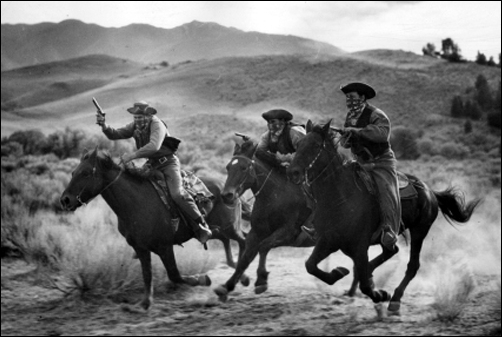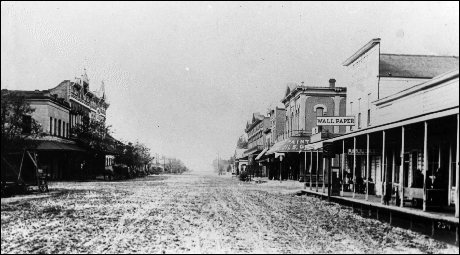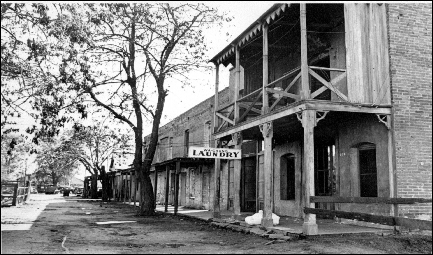Vigilantes - The San Joaquin Regulators All those western television shows and movies, including "The Big Valley," which often mentioned Modesto, could have taken their stories from the happenings in the new village. By 1879, Modesto was lawless and dangerous for the law-abiding citizens and businessmen who iived and worked there. Families and women, in particular, found it difficult to be safe in the community. A description in "Stories of Stanislaus" brings to life the wild and wooly nature of the town: "Like every frontier village that grew up with a rush and experienced unexampled prosperity from the start - thereby attracting to its confines the rougher elements of society who sought opulance without honest endeavor amidst the prmitive customs and the open life of a rudely and rapidly constructed town - Modesto, in its infancy, suffered its period of open lawlessness, its era of unbridled gambling, its reign of brutal thuggery, its sway of the malign saloon influence and its season of brazen, flaunting vice. The liveliest mining camp, situated upon civilization's extreme verge, in the height of its most wide open activities, possessed no edge upon Modesto in the years from 1879 to 1884." The San Joaquin Regulators took matters into their own hands twice: once in 1874 to clear out much of the riff-raff of Modesto's Front Street - cleaning up the saloons, Chinatown and the vice that pervaded the area. Again, in 1884, they also brought justice to several people they deemed criminals - especially in light of what they considered an injustice when one of the criminals had been released by the court. The Regulators felt an obligation to make Modesto a safe place that could support a family lifestyle where husbands, wives and children would be safe without feeling that their lives were jeopardized by a perceived criminal element. After the 1884 appearance, the Regulators faded away into the rest of the town's population. They had created what they considered a safe environment for the growing population of Modesto, and hoped that their efforts would build a community of safe and industrious growth. Not everyone agreed with the tactics of the Regulators, taking the law into their own hands, but their actions were condoned and eventually applauded by many in the town. | ||||
Most of us visualize a scene similar to the artwork above when we think of western vigilantes or a sheriff's posse scouring the countryside for those who have broken the law. The story of the San Joaquin Regulators, while equally dramatic in its telling, doesn't include chasing criminals on horseback. This group of vigilant locals was on foot and included mostly upstanding businessmen who just wanted to clean up the village to create a healthy environment for their customers and famlies.
| ||||
The Early Years
Unpaved streets and raised wooden sidewalks were the paths Modesto's population used in the earliest days of the village's existence. As anyone who has watched western movies or television shows knows, the typical town was built haphazardly until fires leveled the old buildings and new ones were built. | China Alley
Opium dens and tunnels were part of China Alley, an area targeted by the earliest raids of the San Joaquin Regulators. The cleanup was ostensibly to stop crime and to make the village safe for its citizens, but the Chinese were often regarded unfavorably by the local residents, maligned and chased out of town. |



